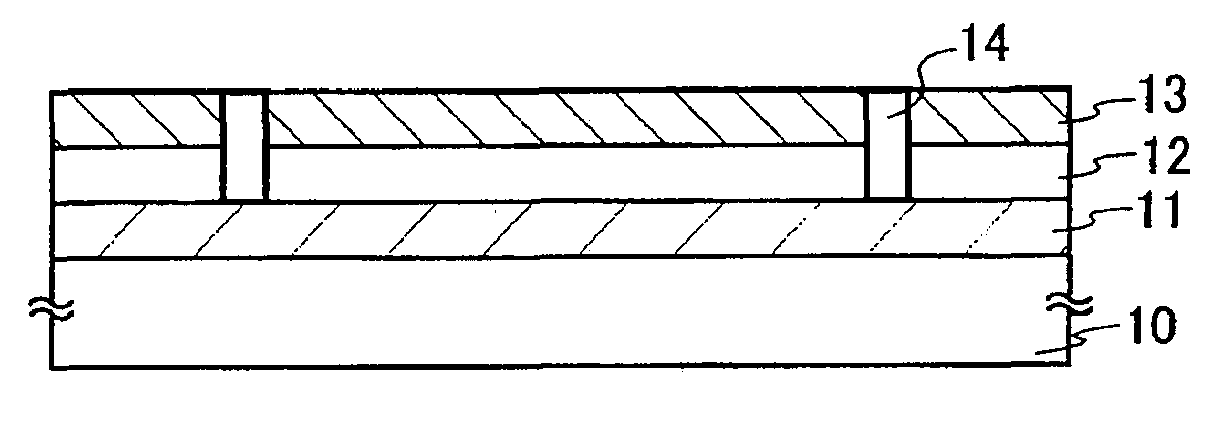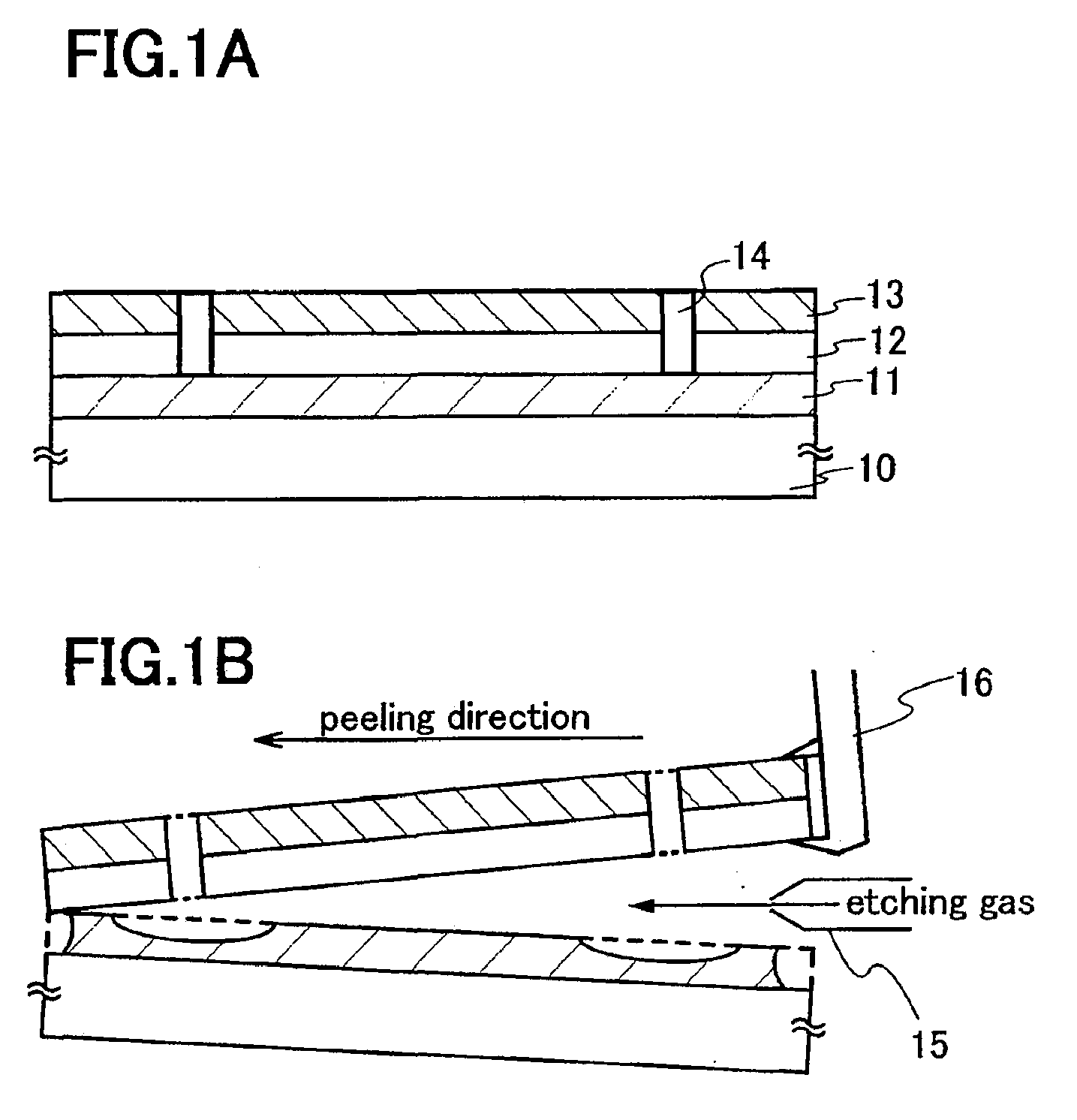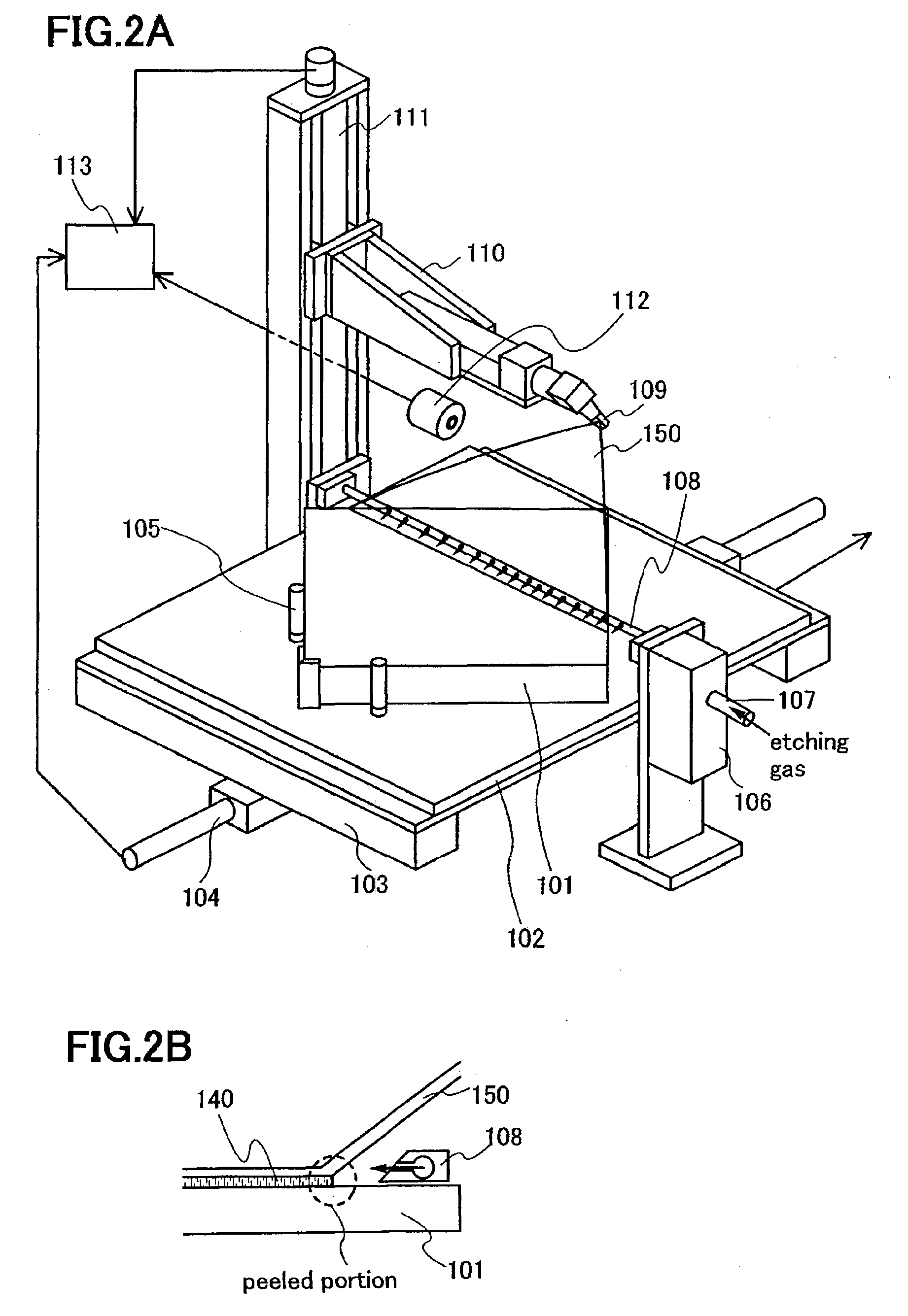Manufacturing Method of Semiconductor Device
a manufacturing method and semiconductor technology, applied in the field of semiconductor devices, can solve the problems of increased size, heavy and easily broken, glass substrates and quartz substrates are not suitable for mass production, etc., and achieve the effects of reducing weight, short time, and smooth peeling
- Summary
- Abstract
- Description
- Claims
- Application Information
AI Technical Summary
Benefits of technology
Problems solved by technology
Method used
Image
Examples
embodiment mode 1
[0037] In Embodiment Mode 1, a manufacturing method is described, in which a layer to be peeled including a TFT formed over a glass substrate is peeled off from the glass substrate and then transferred onto a plastic substrate. Here, an example of removing a layer to be peeled with a halogen gas blowing to a peeling layer in an atmosphere containing a halogen gas is described.
[0038] First, a peeling layer 11 is formed on a glass substrate 10. As the peeling layer 11, a single layer or a laminated layer formed of an element selected from W, Ti, Ta, Mo, Cr, Nd, Fe, Ni, Co, Zr, Zn, Ru, Rh, Pd, Os, or Ir, or an alloy material or a compound material containing the element as its main component can be used. Alternatively, a single layer or a laminated layer formed of nitride of the above-described element such as titanium nitride, tungsten nitride, tantalum nitride, or molybdenum nitride can be used. The thickness of the peeling layer 11 is 10 nm to 200 nm, preferably 50 nm to 75 nm.
[00...
embodiment mode 2
[0069] Though an example of performing the peeling in a halogen gas atmosphere is described in Embodiment Mode 1, an example of performing peeling in an etchant will be described here.
[0070] Similarly to Embodiment Mode 1, a peeling layer 21 is formed over a glass substrate 20, and an insulating film and a layer to be peeled 22 including a plurality of TFTs, which is provided over the insulating film, are formed. In this embodiment mode, a silicon film is used as the peeling layer 21. A protective layer 23 is formed in the same manner as in Embodiment Mode 1. The protective layer 23 is formed using a material which does not react with an etchant to be used in a subsequent step, for example, an organic resin.
[0071] Subsequently, dry etching or wet etching is performed using a mask. In this etching step, an opening portion 24 reaching the peeling layer 21 is selectively formed in a region except a region provided with the TFT, a wiring, or the like, so as to expose the peeling layer...
embodiment 1
[0083] In Embodiment 1, a case of using a thin film integrated circuit as an IC chip will be described.
[0084] The IC chip can be roughly divided into three types: a contactless type IC chip mounted with an antenna (also referred to as a wireless tag), a contact type IC chip provided with a terminal connected to an external power source without a mounted antenna, and a hybrid type IC chip which is a combination of the contactless type and the contact type.
[0085] In the case of using the thin film integrated circuit as the contact type IC chip, the thin film integrated circuit peeled by a peeling method of the present invention can be used by being directly mounted on an article.
[0086] On the other hand, in the case of using the thin film integrated circuit as the contactless type IC chip or the hybrid type IC chip, the integrated circuit is preferably used with a mounted antenna. Examples of a cross-sectional view of the IC chip, on which an antenna is mounted, are shown in FIGS. ...
PUM
 Login to View More
Login to View More Abstract
Description
Claims
Application Information
 Login to View More
Login to View More - R&D
- Intellectual Property
- Life Sciences
- Materials
- Tech Scout
- Unparalleled Data Quality
- Higher Quality Content
- 60% Fewer Hallucinations
Browse by: Latest US Patents, China's latest patents, Technical Efficacy Thesaurus, Application Domain, Technology Topic, Popular Technical Reports.
© 2025 PatSnap. All rights reserved.Legal|Privacy policy|Modern Slavery Act Transparency Statement|Sitemap|About US| Contact US: help@patsnap.com



